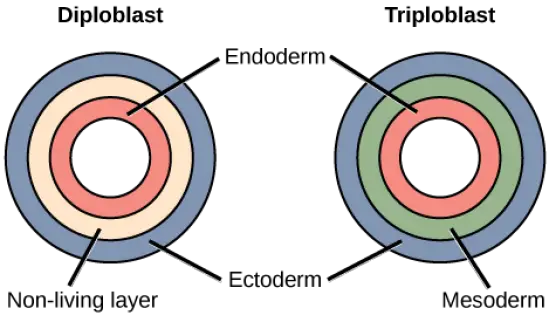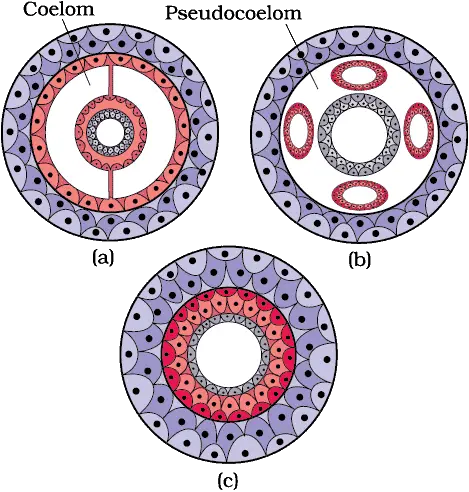We have already discussed the definition of Chordata and the fundamental characteristic of Chordata and now we are going to discuss the similarity between Chordata and non-chordates.
Table of Contents
Similarity Between Chordate and Nonchordate:
Formation of Body Axis:
In higher non-chordate and chordate has a longitudinal axis and on the anterior sides developed into the cephalic region while the posterior region ends into the tail.
The imaginary axis from the anterior head or cephalic region to the posterior tail is known as the anterior-posterior axis but this polar organization in higher non-chordate and chordate are not exactly similar or homologous on the basis of origin.
During embryonic development in the case of protostomes, the blastopore forms the mouth while in the case of deuterostomes the blastopore form the anus so in most of the non-chordates blastopore form the mouth while in case of Chordata the blastopore from the anus.

Both Higher Nonchordate and Chordata are Triploblastic:
Chordata and some groups of non chordates, Annelida, arthropods, Mollusca, Echinodermata show triploblastic conditions. In that higher non-chordate and in all Chordata all the tissues arise from their germ layers mesoderm, ectoderm, and endoderm but the development of those three layers are not similar in all groups of organisms.
In Echinodermata formation of mesoderm occur through the development of an outgrowth from the archenteron in the gastrula stage while in the case of Annelida, arthropods and Mollusca mesoderm development occur from the junction of ectoderm and endoderm during the gastrula stage.
Coelom:
The coelom is a type of body cavity that is lined by mesodermal tissue and is present in both higher non-chordate and Chordata but the development of Coelom in those animals is not similar.

Coelom present in Echinodermata is formed from the archenteron and this type of Coelom is known as enterococcus coelom while in the case of Annelida, arthropods, Mollusca and in Chordata the coelom is formed by splitting of mesodermal tissue and this type of coelom is known as a schizocoelous coelom.
Bilateral Symmetry:
In Chordata and higher non-chordates like Annelida, Arthropoda shows bilateral symmetry and it is due to developing the axiation or anterior-posterior pole. In bilateral symmetry right half of the body looks like the left half of the body.
Metamerism:
Chordata and higher non-chordates like Annelida and Arthropoda show metamerism and this feature are also known as segmentation.

In metamerism, the body is divided into several segments and each segment is known as metamer but this metamerism can be both external and internal or only internal. In the case of Annelida, metamerism is present both internally and externally and in the case of Arthropoda, the segmentation occurs both externally and internally.
But in the case of Chordata, the metamerism is not very clear externally in the case of fish the species arrangements of muscle represent metamerism, in all vertebrate animals, the segmented vertebral column represents the metamerism.
Organ-System Level of Organisation:
Body organization in the case of chordate is the organ systems level of organizations in which different body organs give rise to organ systems that are specialized for specific body functions and a number of systems finally form the whole body.
For example, in the case of the chordate digestive system take part in ingestion, digestion, and egestion of nutrients, nervous system help in body coordination, the circulatory system circulates different substances throughout the body, the excretory system takes part in the removal of harmful excretory material from the body.
Along with Chordata higher non-chordates also show organ systems level of organizations in which different organs systems perform different body functions, it is true that the organ level in non-chordates is not advanced as Chordata but organ systems level in non-chordates indicate the common ancestry of non-chordates and chordate.
Conclusion:
If we study carefully all the common characteristics among Chordata and higher non-chordates animals then it gives a strong indication of common ancestry between Chordata and higher non-chordates and according to the timeline of evolution we can assume that Chordata is evolved from non-chordates.
Reference: Chordate and Higher Nonchordates Similarity
Hi Everyone!!! Welcome to Imaluop. Imaluop always try to learn some new and he want to share to other people. Here we will try to learn various topics on Science, specially on Biological Sciences.